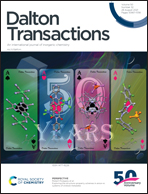Synthesis and electrochemical properties of Zn2Ti3O8/g-C3N4 composites as anode materials for Li-ion batteries†
Abstract
Zn2Ti3O8/g-C3N4 (0, 1, 3 and 8 wt%) composites were prepared via a simple solvothermal method, and their physical and electrochemical properties were systematically analyzed. SEM and HRTEM results show that the Zn2Ti3O8/g-C3N4 spherical structures with width sizes of about 500–700 nm are plump and uniform. Moreover, g-C3N4 with a large specific surface area can effectively buffer the deformation of Zn2Ti3O8 and reduce the resistance of Zn2Ti3O8 charge transfer and Li+ diffusion, thus improving the conductivity of Zn2Ti3O8. The results reveal that Zn2Ti3O8/g-C3N4 (3 wt%) had the most outstanding electrochemical performance of all samples. It can deliver discharge (charge) capacities of 444.6 (387.9), 284.5 (280.8), 197.5 (199.9), 149.9 (149.3), 119.2 (118.7) and 81.4 (81) mA h g−1 cycled at 50, 100, 300, 600, 900, and 1500 mA g−1, respectively. At the same current densities, pure Zn2Ti3O8 only provides discharge (charge) capacities of 325.4 (283.5), 223.7 (219.5), 142.9 (141.8), 95.4(94.8), 69.4 (69.4) and 38.3 (39.3) mA h g−1. The results verify that Zn2Ti3O8/g-C3N4 materials are expected to be remarkable anode materials for Li-ion batteries.



 Please wait while we load your content...
Please wait while we load your content...